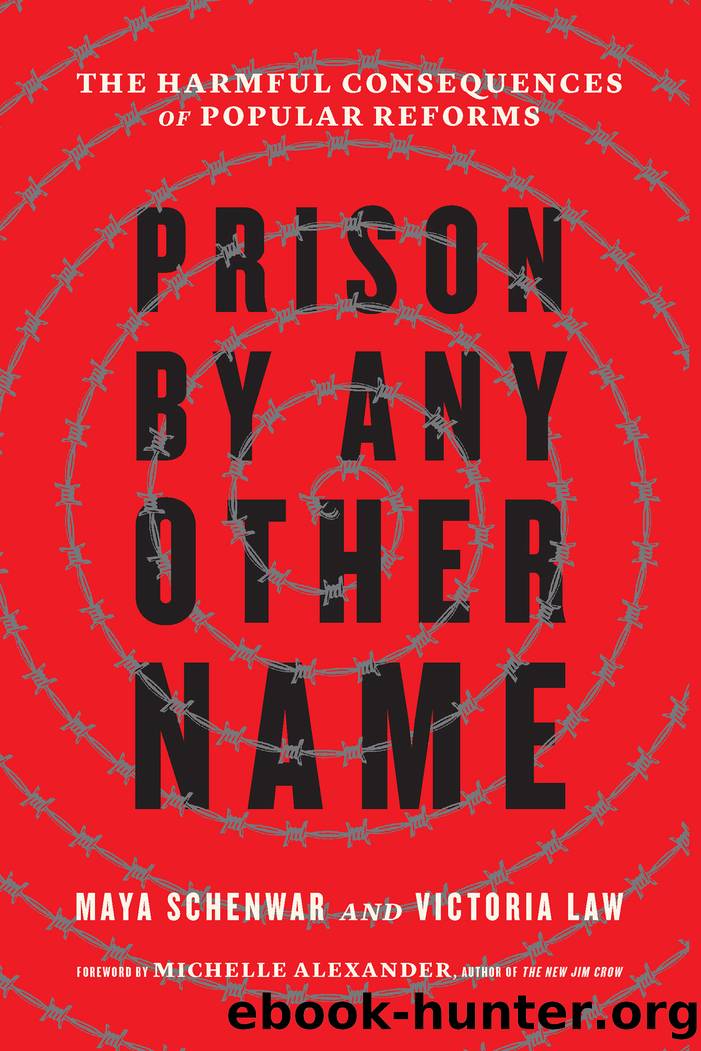Prison by Any Other Name by Maya Schenwar

Author:Maya Schenwar
Language: eng
Format: epub
Publisher: The New Press
Published: 2020-07-14T16:00:00+00:00
Your Neighbor Is Your Jailer
“More police” doesn’t always refer to patrolling officers. The trend toward community policing also mobilizes community members to do the work of the police. It encourages neighbors to watch and report on each other’s activities. This facet of community policing isn’t new. In fact, it’s as old as the United States itself.
American policing emerged from the nation’s history of civilian-based efforts to control and harm certain groups of people, particularly Black and Native people as well as those considered dissidents. Many southern police departments started as slave patrols during the antebellum years: volunteers served on these patrols to capture enslaved people who had escaped or were perceived as trying to flee.27 In the American North, community members were often expected to serve on “night watches,” other early forerunners of what would become American police. The first formal night watch was formed in 1636 in Boston, primarily to patrol the streets and watch for residents involved in sex work or other behaviors deemed deviant. Men over eighteen were expected to serve.28 Volunteer police helpers also have a long history in the United States of facilitating Indigenous genocide. In the nineteenth and early twentieth centuries, for example, the Texas Rangers chased down and killed Native people rumored to have attacked colonizers, and they lynched Tejanos, or Texans of Mexican descent.29 But the Texas Rangers were not actual police, military, or even militia forces; instead, these volunteer vigilantes were essentially “community members” playing a collaborating role in policing and protecting newly arriving white colonizers.
The role of community member involvement in policing, including the night watch, never went away. The idea of a neighborhood watch—with police rallying residents to come together to look for suspicious behavior—gained popularity in the 1960s. In the early 1970s, the National Sheriffs’ Association established the National Neighborhood Watch Program.30 Official accounts say that the trend was a response to a surge in crime in the late 1960s.31 But the 1960s, like today, were a time in which large numbers of people were calling attention to and challenging the ways that police were attacking their communities. The civil rights movement and the repression of leftist movements, such as the Black liberation movement, brought wider attention to police violence, particularly against people of color and dissidents. In response, the idea of neighborhood watch was revived and branded as community policing, reaffirming the overall legitimacy of the police. We can see a similar dynamic at work today as cities respond to a renewed spotlight on police violence with a renewed emphasis on community policing.
Why is community policing such a time-honored tactic for repairing police legitimacy? Some of it is certainly a public relations stunt—the word “community” evokes images of friendly relationships rather than hostile encounters that result in violence and arrest. It’s also a strategy that easily rakes in extra dollars from city budgets to put more cops on the street while diverting calls for real changes and accountability. But it’s also a more sinister game: when the
Download
This site does not store any files on its server. We only index and link to content provided by other sites. Please contact the content providers to delete copyright contents if any and email us, we'll remove relevant links or contents immediately.
The Borden Murders by Sarah Miller(4278)
The Secret Barrister by The Secret Barrister(3665)
Police Exams Prep 2018-2019 by Kaplan Test Prep(2517)
Coroner's Journal by Louis Cataldie(2459)
The Splendid and the Vile by Erik Larson(2419)
Terrorist Cop by Mordecai Dzikansky & ROBERT SLATER(2053)
My Dark Places by James Ellroy(1914)
A Colony in a Nation by Chris Hayes(1905)
The Art of Flight by unknow(1843)
Black Klansman by Ron Stallworth(1768)
Objection! by Nancy Grace(1765)
A Life of Crime by Harry Ognall(1713)
The New Jim Crow by Michelle Alexander(1677)
American Prison by Shane Bauer(1645)
Anatomy of Injustice by Raymond Bonner(1643)
Invisible Women by Caroline Criado Perez;(1607)
Whoever Fights Monsters by Robert K. Ressler(1594)
Obsession (The Volkov Mafia Series Book 1) by S.E Foster(1560)
A is for Arsenic: The Poisons of Agatha Christie (Bloomsbury Sigma) by Kathryn Harkup(1527)
